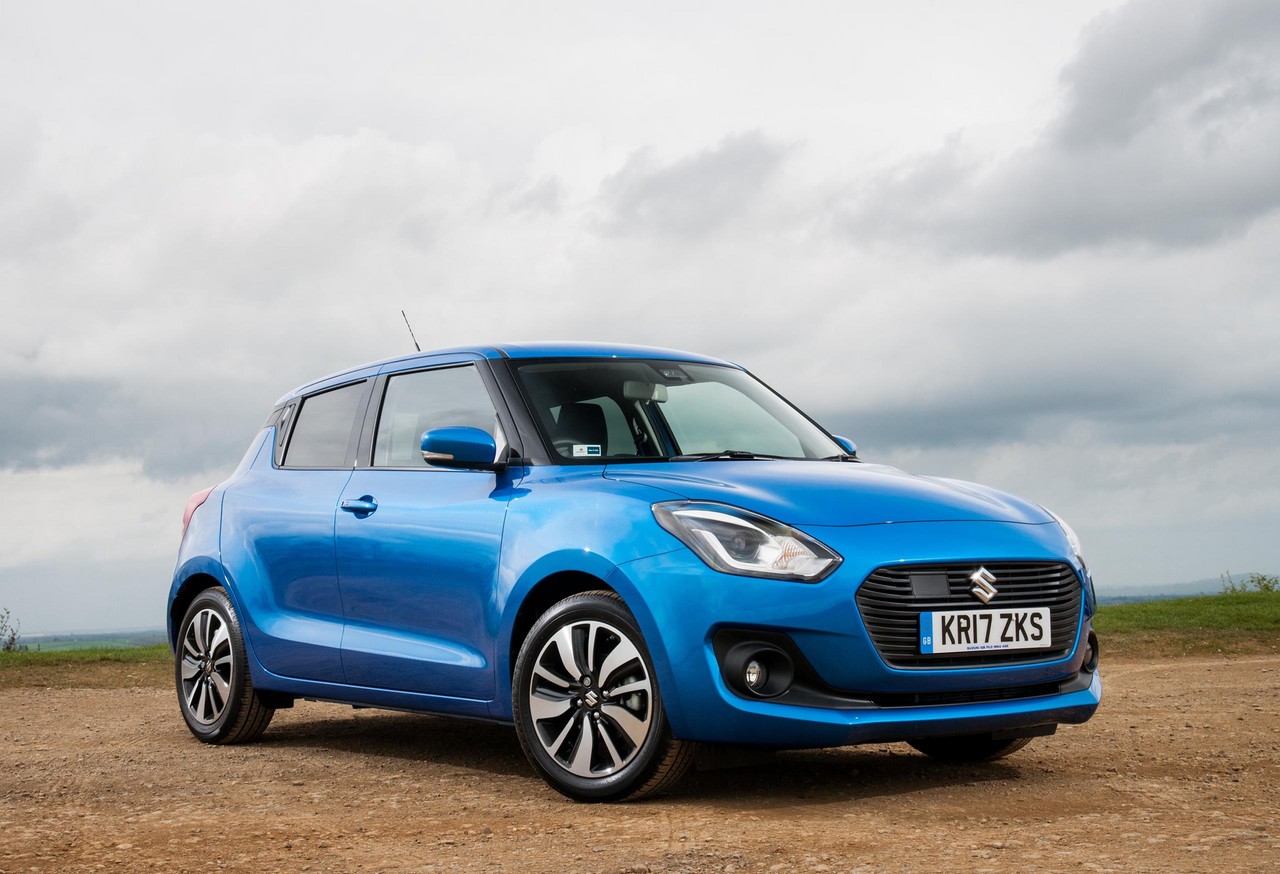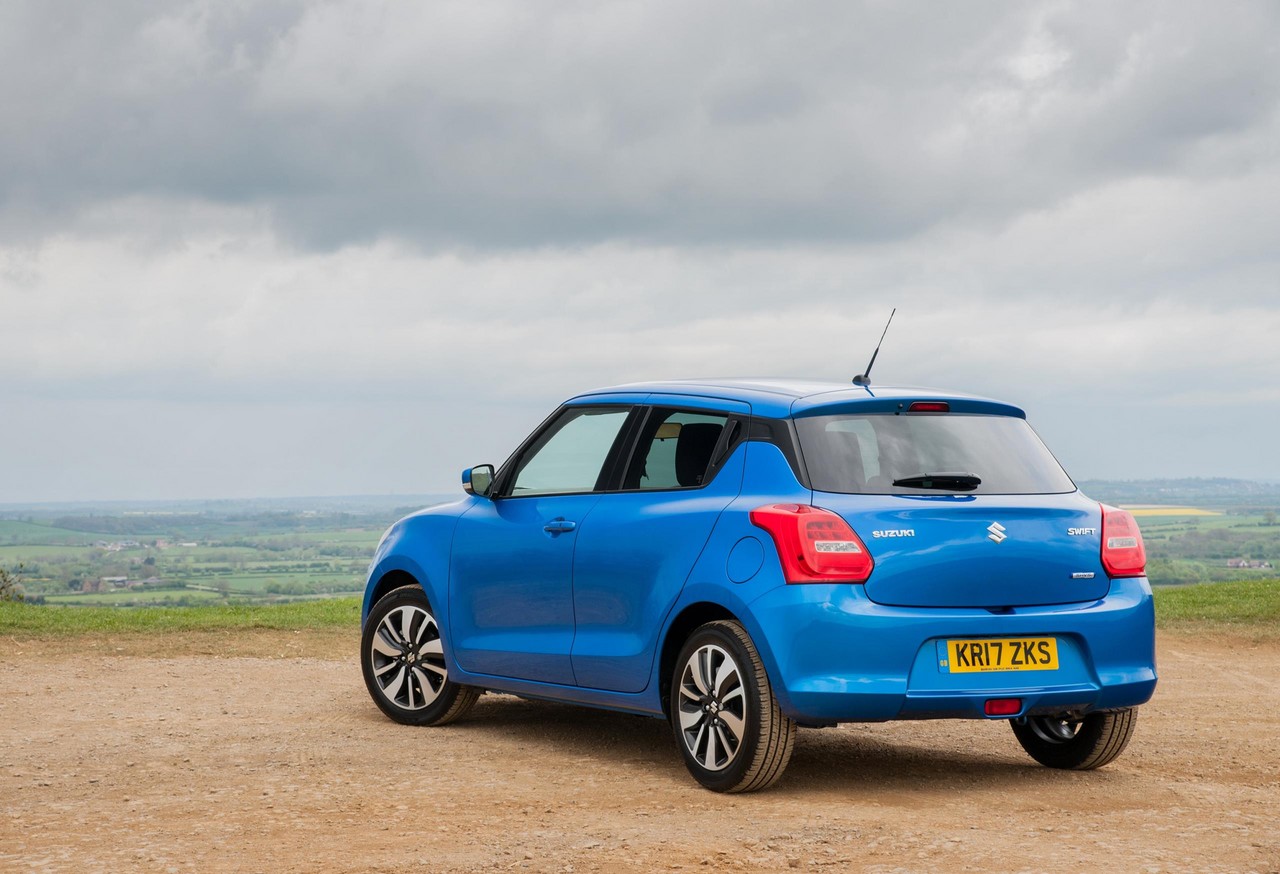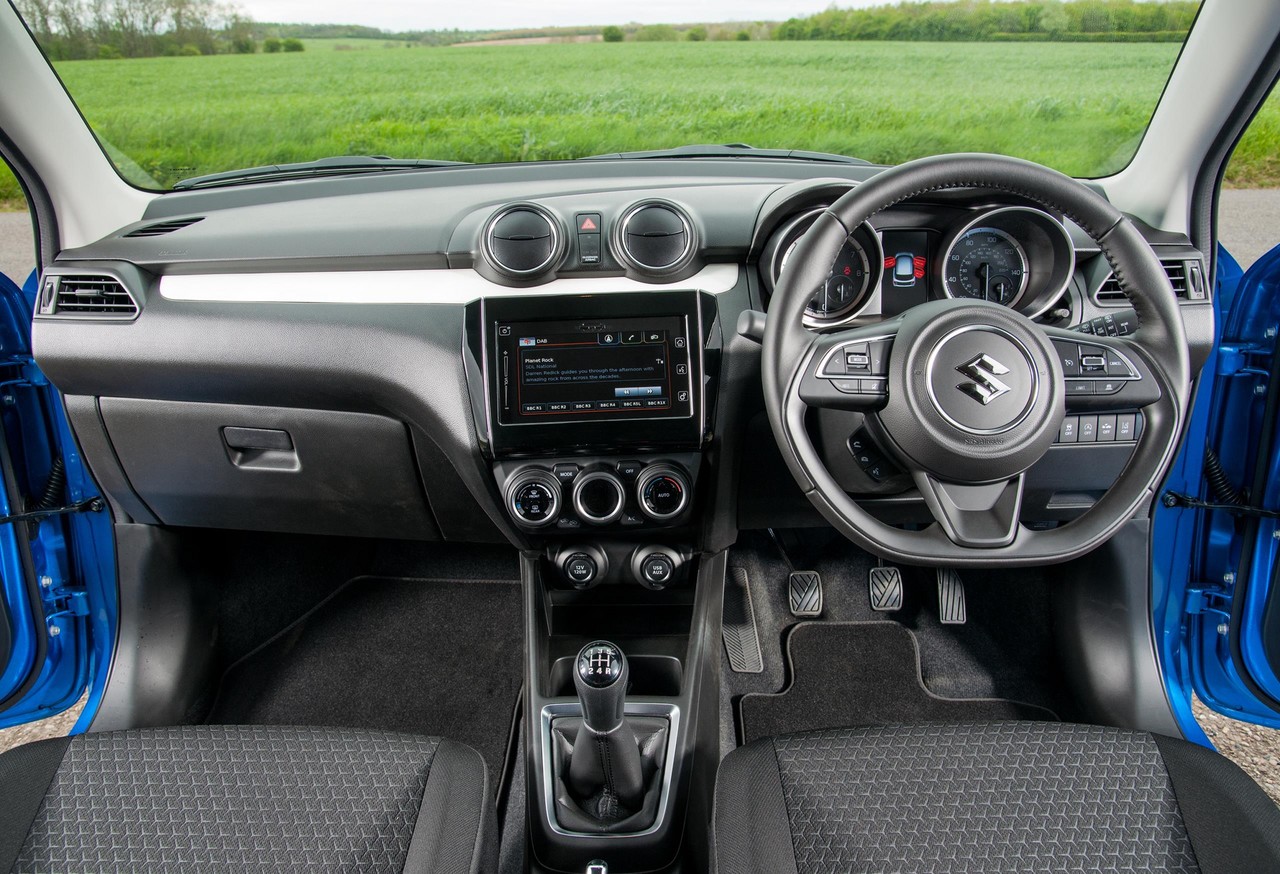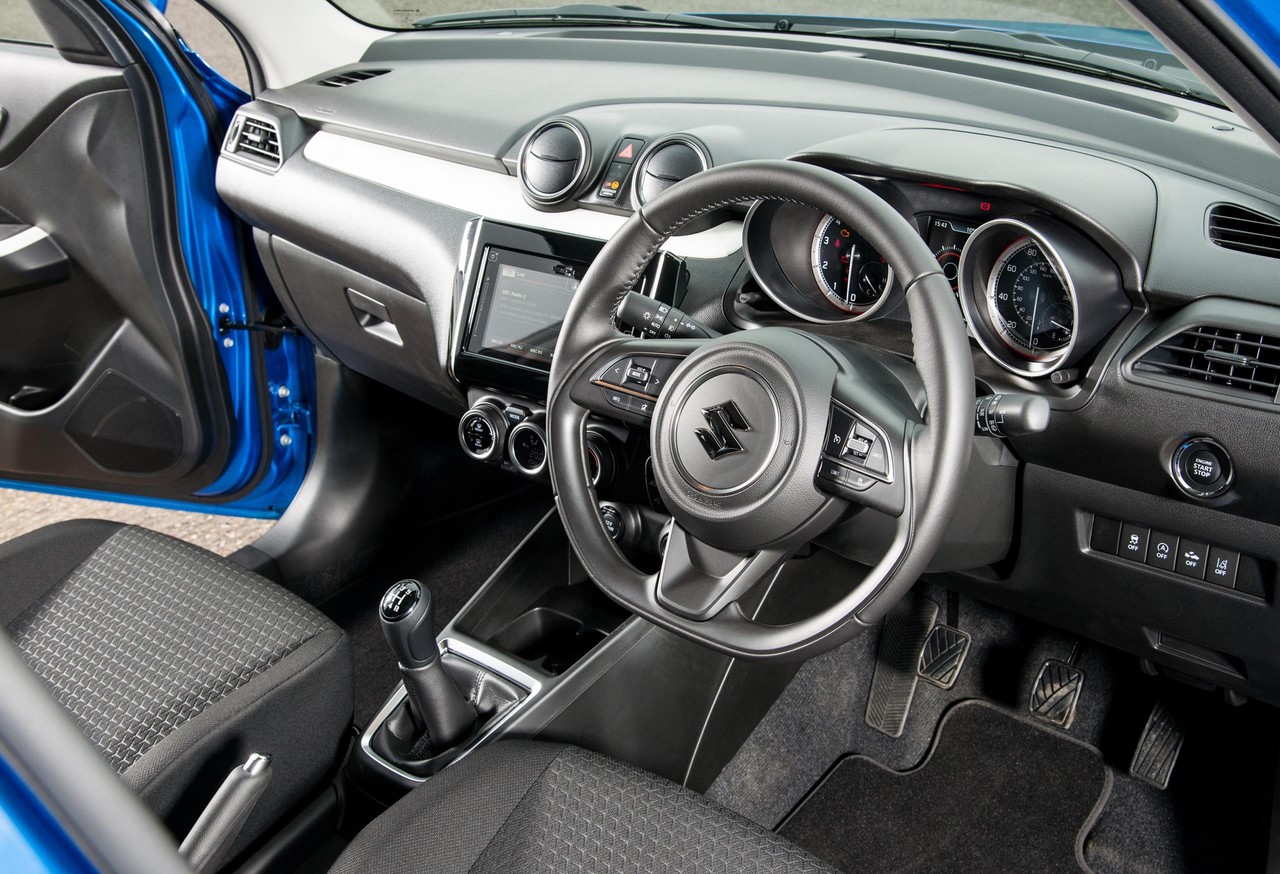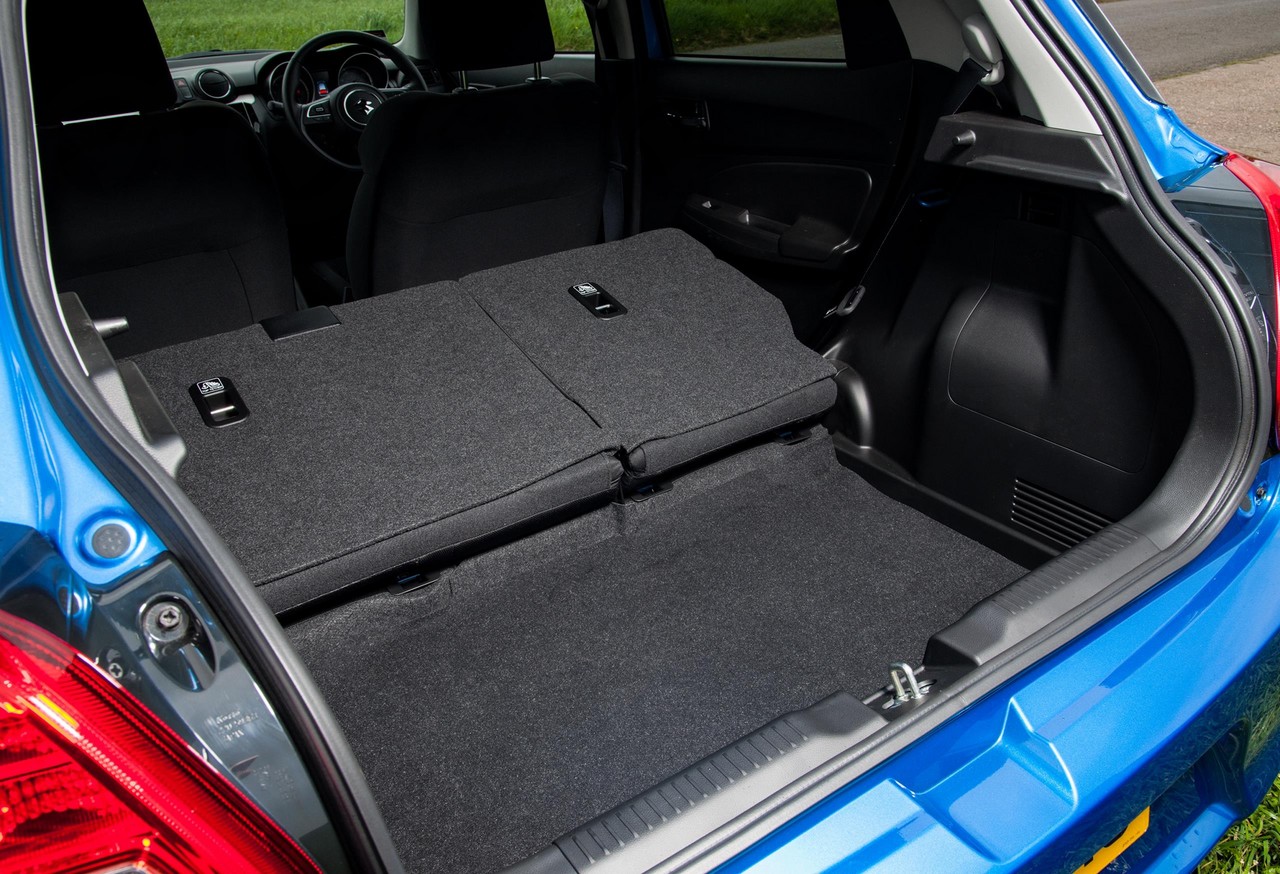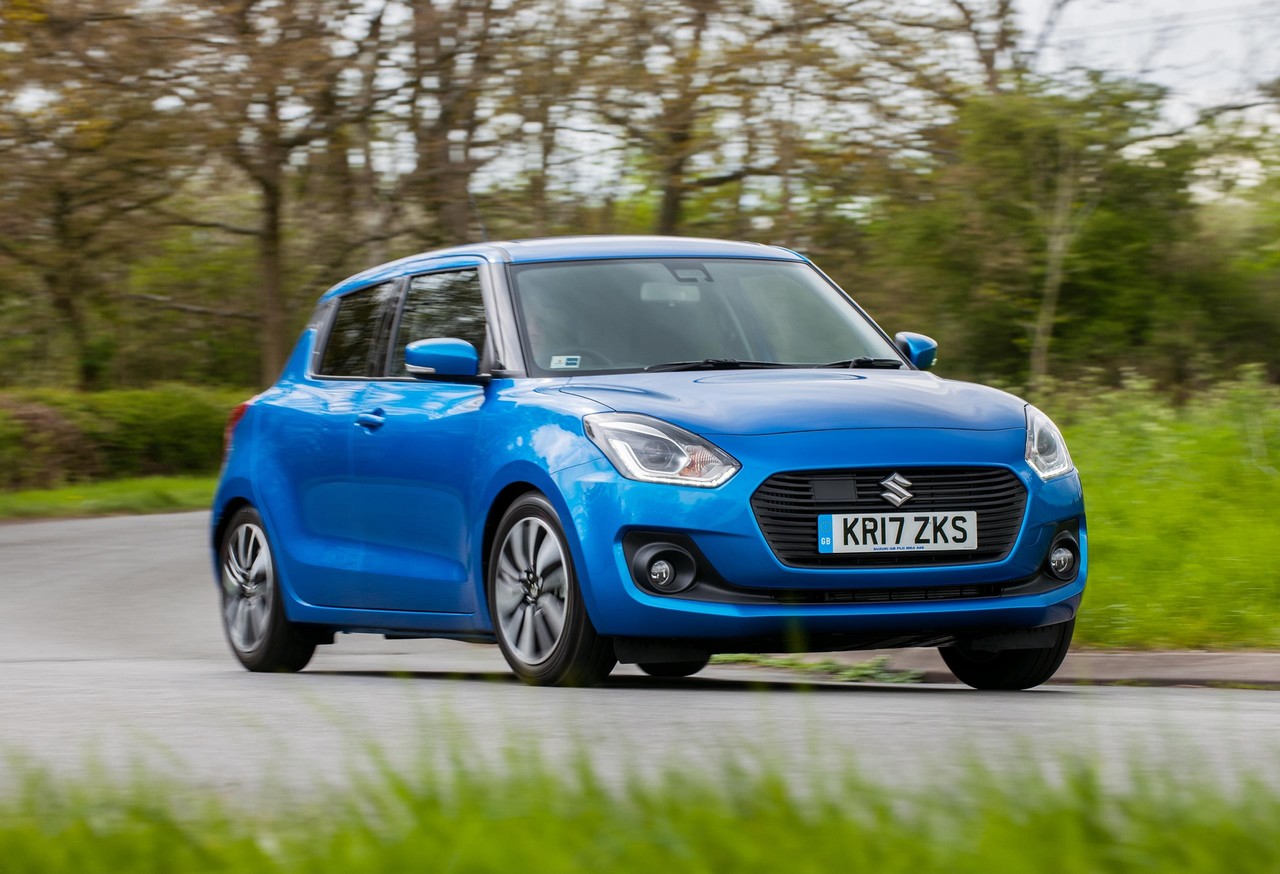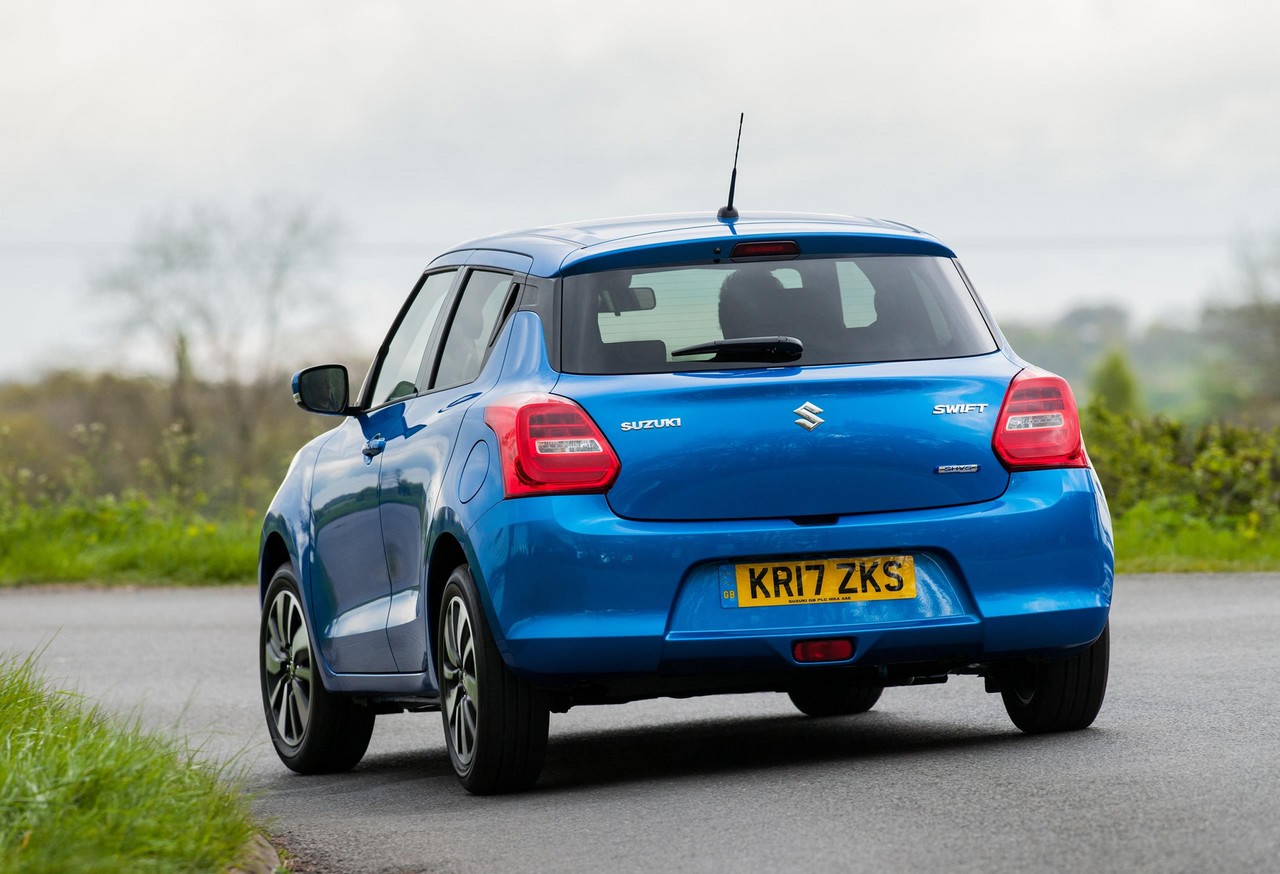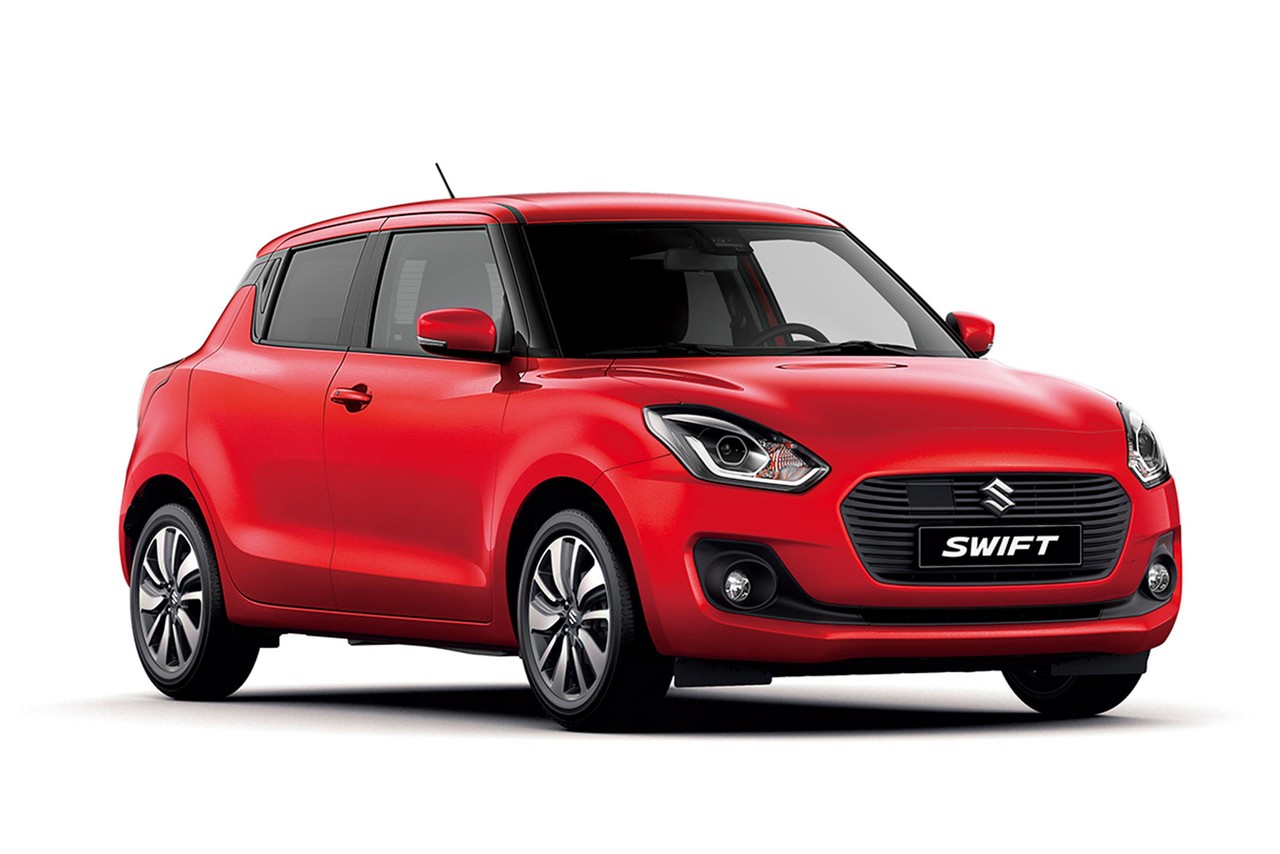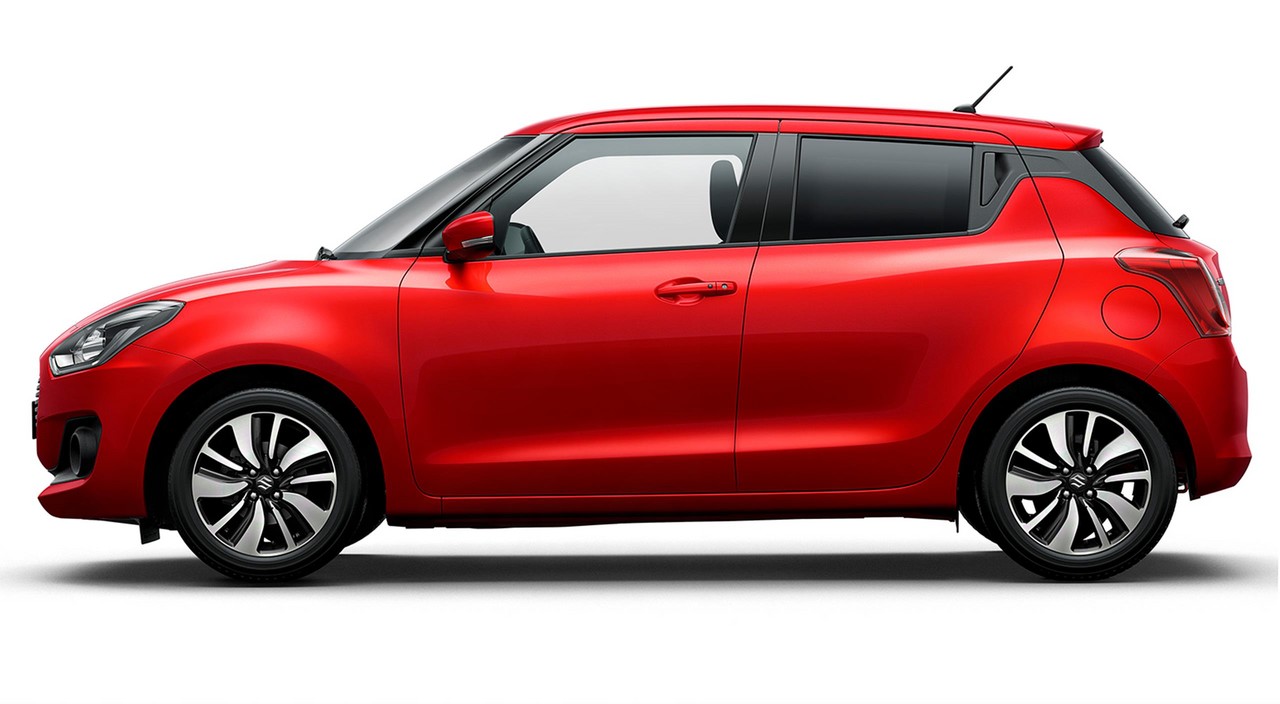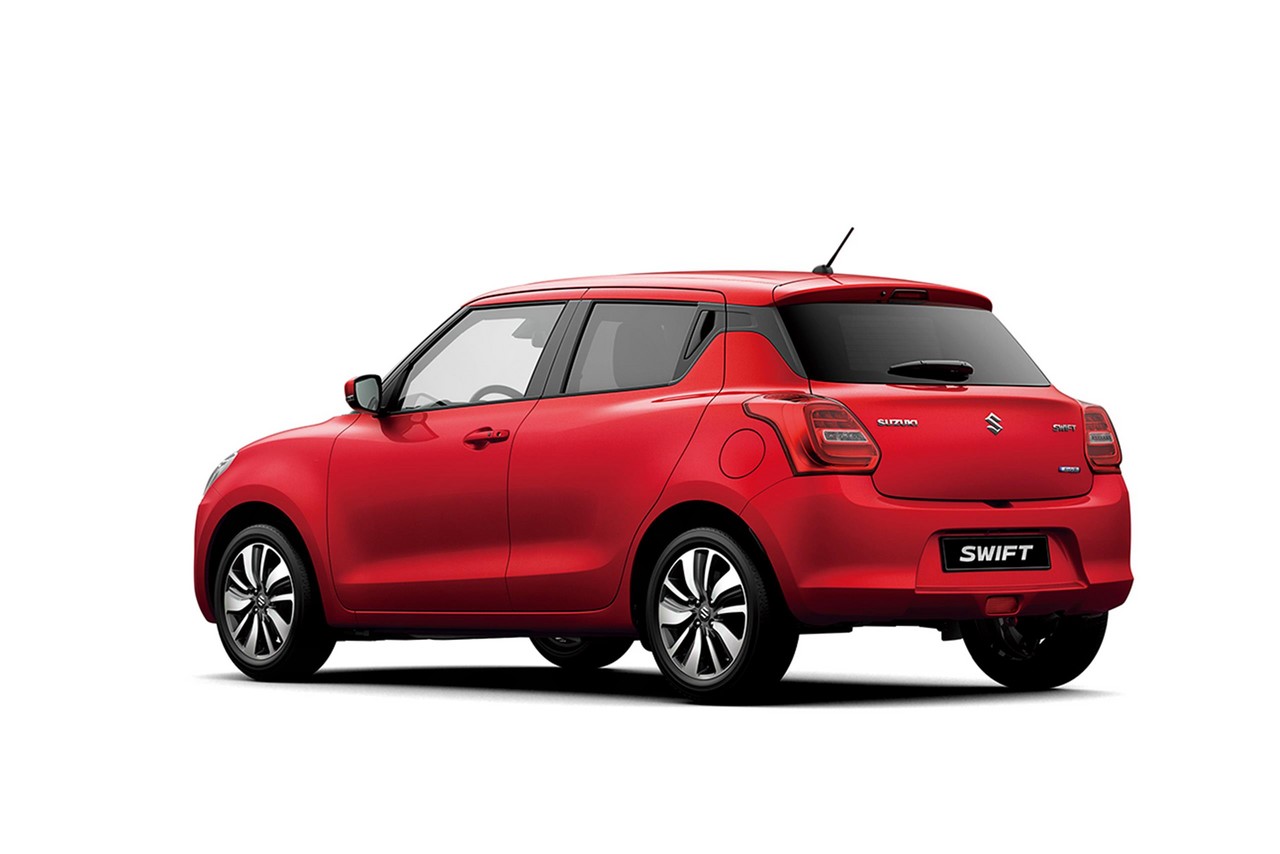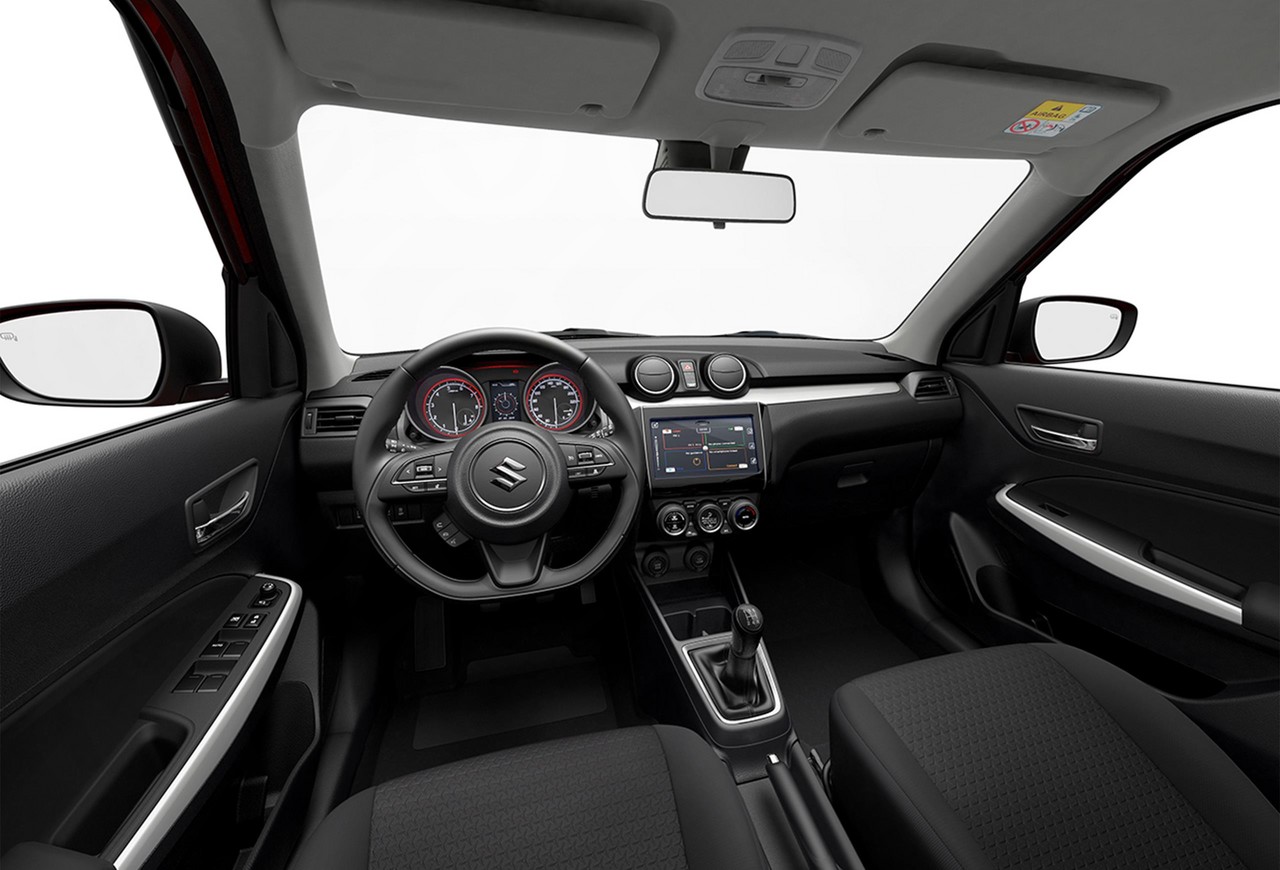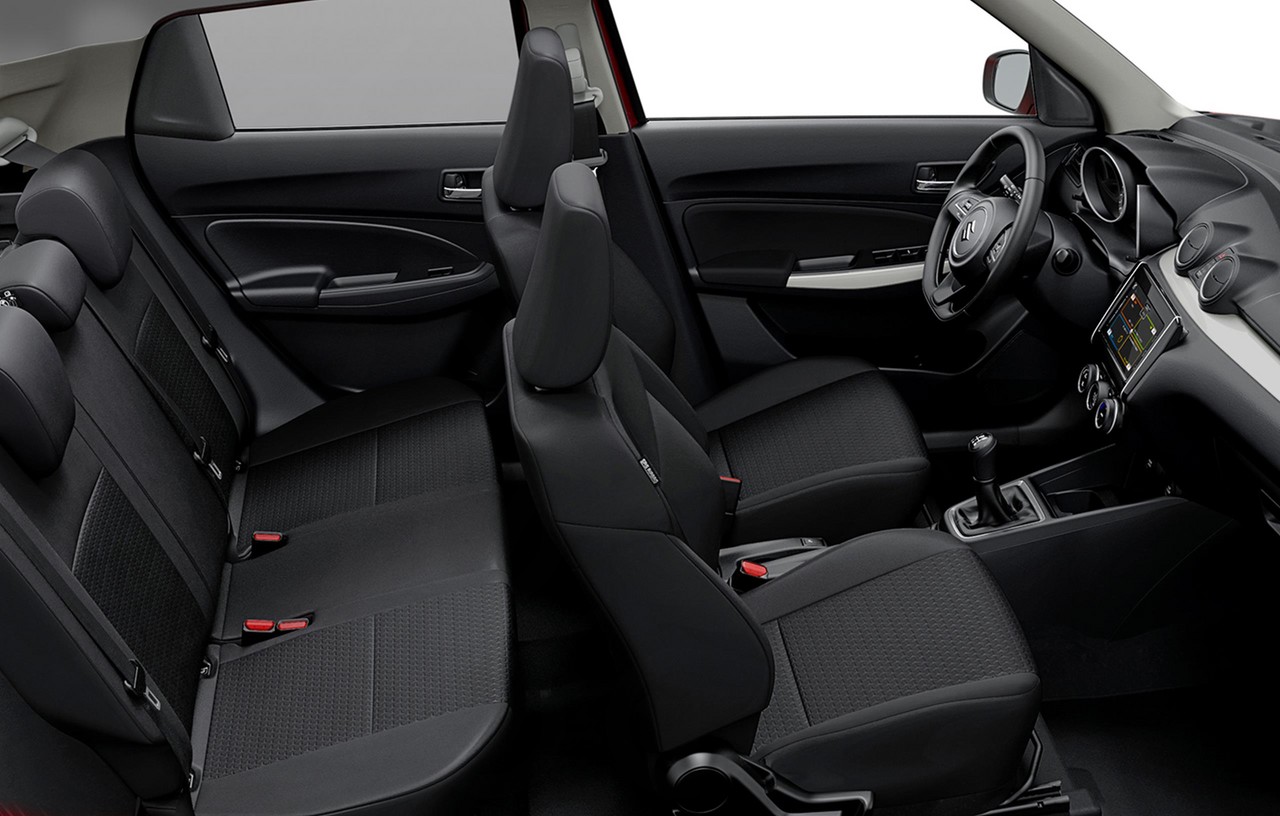
- Fuel-efficient 1.0-litre turbocharged petrol engine
- Low weight contributes to agile handling (though not as satisfying as the Mk.6 Swift)
- Generally comfortable ride
- Functional infotainment system
- Light steering is accurate…
- … but has little feel and kicks back over bumps
- Autonomous Emergency Braking (AEB) not standard
- 1.0-litre engine has some turbo lag at low rpm
- Underpowered 1.2-litre engine
- Cheap interior plastics
- Tyre noise
Overview
Released in Australia in June 2017, the Suzuki Mk.7 Swift was a light, five-door hatchback. For Australian delivered-vehicles, the front-wheel drive Suzuki Mk.7 Swift was manufactured in Sahara, Japan, and powered by 1.2-litre naturally aspirated and 1.0-litre turbocharged petrol engines.
The Suzuki Swift Sport was released in Australia in January 2018; it was powered by a 1.4-litre turbocharged petrol engine that was mated to a six-speed manual transmission. From August 2018, the Swift GL Navigator was available with a five-speed manual transmission.
| Engine | Variant | Trans. | Peak power | Peak torque |
|---|---|---|---|---|
| 1242 cc K12C petrol I4 | GL | 5sp man. | 66 kW at 6000 rpm | 120 Nm at 4400 rpm |
| GL Navigator | 5sp man. (from 8/2018), CVT |
|||
| 998 cc K10C turbo petrol I3 | GLX | 6sp auto | 82 kW at 5500 rpm | 160 Nm at 1500-4000 rpm |
| 1373 cc K14C turbo petrol I4 | Sport | 6sp man. | 103 kW at 5500 rpm | 230 Nm at 2500-3000 rpm |
Body and dimensions
Like the Suzuki Baleno and Suzuki MF Ignis , the Suzuki Mk.7 Swift was underpinned by Suzuki’s ‘HEARTECT’ lightweight platform. Compared to the Suzuki Mk.6 Swift which it replaced, however, the Mk.7 Swift was 10 mm shorter (at 3840 mm), 40 mm wider (1735 mm), 15 mm lower (1495 mm) and has a 20 mm longer wheelbase (2450 mm). Furthermore, the Mk.7 Swift has a luggage capacity of 242 litres with the rear seats in position (VDA method).
To increase body stiffness, the ‘HEARTECT’ platform utilised a continuous frame –rather than the segmented frame of the Mk.6 Swift – which enabled a reduction in body reinforcements for a mass reduction of 30 kg. For the Mk.7 Swift,
- 17 per cent of the body (by weight) consisted of 980 MPa ultra-high-tensile steel; and,
- 4 per cent of the body (by weight) consisted of 789 MPa grade high-tensile steel.
Kerb weights for the Suzuki Mk.7 Swift ranged from 870 kg to 915 kg.
Suspension and steering
The Suzuki Mk.7 Swift had MacPherson strut front suspension that was mounted on a sub-frame that was attached to the body at six points (compared to four points for the Mk.6 Swift ). For the torsion beam rear suspension, the cross beam and trailing arm were both stiffer and lighter.
The Suzuki Mk.7 Swift had rack-and-pinion steering with a variable gear ratio and electric power assistance. For the Mk.7 Swift, the steering had a hollow rack bar and a straightened tie-rod to reduce weight and achieve a high level of rigidity. Furthermore, the Mk.7 Swift had a minimum turning radius of 4.8 metres.
Safety equipment
Standard safety equipment for the Suzuki Mk.7 Swift included dual front airbags, front seat-mounted side airbags, full-length curtain airbags (i.e. for front and rear occupants), ABS, electronic brakeforce distribution, brake assist, electronic stability control, traction control and front seatbelts with pre-tensioners and load limiters.
The Suzuki Swift GL Navigator with Safety Pack and GLX were fitted with a forward detection system that used a monocular camera and laser sensor to monitor the area in front of the vehicle. As such, these models were equipped with the following active safety technologies:
- Suzuki’s ‘Dual Sensor Brake Support’ (DSBS) system: operated at speeds from 5 km/h to 100 km/h and could issue audible and visual warnings (the latter on the multi-information display) if a collision was anticipated. In its second stage, DSBS would prepare the braking system and brake assist to provide maximum braking force when the brake pedal was depressed. In its final stage, autonomous emergency braking (AEB) would be initiated to reduce vehicle speed and the severity of the collision;
- Lane Departure Alert: operating at speeds above 60 km/h, the camera could detect lane markers and predict the path of the vehicle. If the vehicle was beginning to depart from its lane, a visual warning would be issued (via the multi-information display and indicator light) and the steering wheel would vibrate;
- Weaving Alert: operating at speeds above 60 km/h, the driver would receive audible and visual warnings if the vehicle was detected to be ‘swaying’ within its lane (a common sign of driver fatigue); and,
- Adaptive Cruise Control (ACC): used the millimetre-wave radar to monitor the distance to the vehicle ahead and would control vehicle speed to maintain a safe distance from the vehicle ahead. If traffic ahead cleared, ACC would then accelerate the vehicle up to its previously selected cruising speed.
Euro NCAP testing
In Euro NCAP testing, the 2017 Suzuki Swift was awarded a four star safety rating when equipped with ‘Radar Brake Support’ , and a three star rating for models that were not so equipped . In the frontal offset test, protection of the driver’s head, thighs, lower left leg and feet were rated as good, though lower right leg protection was rated as adequate and chest protection as marginal. In the side impact and pole tests, however, maximum points were awarded.
ANCAP testing
Under ANCAP’s assessment methodology, separate ratings were issued for Suzuki Swift variants which:
- Did not have Autonomous Emergency Braking such as the GL and GL Navigator. These variants were given a ‘truncated’ four star rating; and,
- Had Autonomous Emergency Braking (i.e. the GL Navigator with Safety Pack and GLX Turbo). These variants received a five star rating with a score of 35.13 out of 37.
In the frontal offset test, protection of the driver’s head, thighs and feet were rated as good, but chest and lower leg protection were rated as adequate (i.e. a slight risk of serious injury). In the side impact test, chest protection was also rated as adequate.
Brakes
The Suzuki Swift GL had 231 mm by 17 mm ventilated front brake discs and 180 mm by 34 mm rear drum brakes. The Suzuki Swift GLX, however, had 252 mm by 20 mmm ventilated front brake discs and 228 mm by 9 mm solid rear discs.
Features: Suzuki Swift GL
Standard features for the Suzuki Swift GL included 15-inch steel wheels with 175/65 R15 tyres, a four speaker sound system, 3.5 mm auxiliary and USB inputs for MP3/WMA playback, Bluetooth mobile phone connectivity, air conditioning, cruise control, halogen headlamps, daytime running lights, a leather covered steering wheel, 60:40 split and single fold rear seats, remote central locking, power door mirrors and windows, a tilt adjustable steering wheel, height adjustable driver’s seat, 12 volt accessory socket, rear privacy glass, a cargo cover, trip computer and an immobiliser.
Features: Suzuki Swift GL Navigator
Compared to the Swift GL, the Swift GL Navigator added 16-inch alloy wheels with 175/60 R16 tyres, a multimedia unit with a seven-inch display and satellite navigation, smartphone integration via Apple CarPlay and Android Auto, front fog lamps and a reversing camera.
Features: Suzuki Swift GLX
The range-topping Suzuki Swift GLX was distinguished by its 16-inch alloy wheels with 185/55 R16 tyres, climate control air conditioning, LED projector headlamps with High Beam Assist and dusk-sensing, door mirrors with integrated indicators and power folding, telescopic steering wheel adjustment and push-button start. The Swift GLX was also fitted with LED tail-lamps.
Suzuki Mk.7 Swift Sport
The Suzuki Swift Sport was released in Australia in January 2018. The Swift Sport was powered by a 1.4-litre turbocharged petrol engine which had an air-cooled intercooler, direct injection and seven-hole fuel injectors; a six-speed manual transmission was fitted as standard.
The Suzuki Swift Sport was fitted with Monroe shock absorbers front and rear. Other changes for the front suspension included –
- Thicker front stabiliser joint bars;
- Teflon seats for the stabiliser mounts;
- The wheel hubs and bearings were combined into a single unit; and,
- The width between the bearings was increased for a 15 per cent increase in camber rigidity when cornering.
For the rear suspension, the Swift Sport had a unique rear trailing arm to minimise deformation during cornering. Compared to the Mk.6 Swift Sport, toe rigidity was 1.4 times greater and camber rigidity increased by a factor of ‘nearly three’. Furthermore, the Suzuki Swift Sport had a kerb weight of 970 kg, approximately 80 kg lighter than the Mk.6 Swift Sport.
The Suzuki Swift Sport was similarly equipped to the Swift GLX. Inside, however, the Swift Sport was differentiated by its ‘semi-bucket’ front seats, red interior accents, a flat-bottomed steering wheel with dimpled leather trim, a chrome-finished gear knob, sports alloy pedals, and contrasting colours for the main speedometer and tachometer.
Visually, the Swift Sport could be identified by its 17 x 6.5J ‘thin spoke’ polished alloy wheels (with 195/50 R17 tyres), unique front bumper (with ‘carbon fibre look’ highlights), grille and lip spoiler, side skirts, roof-mounted spoiler, rear diffuser and tapered dual exhaust tips.
2018 Suzuki Swift Sport Red Devil
The limited edition Suzuki Swift Sport Red Devil was released in Australia in July 2018. Compared to the regular Suzuki Sport, the Red Devil edition could be identified by ‘carbon style’ black decals for the bonnet, front bar, side doors, front quarter panels and rear panels. Australian deliveries of the Suzuki Swift Sport Red Devil were limited to 100 vehicles.
Brochure and specifications
